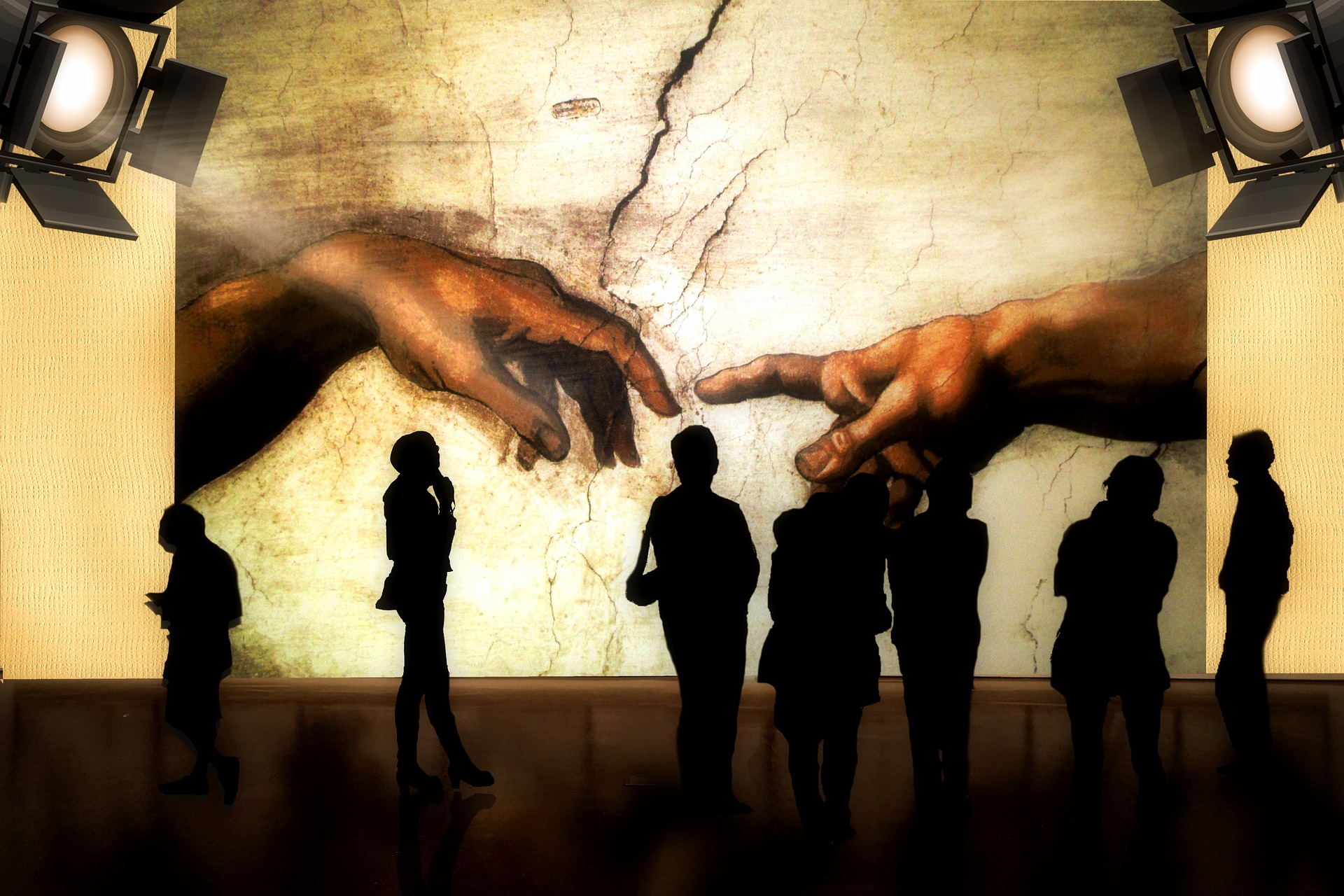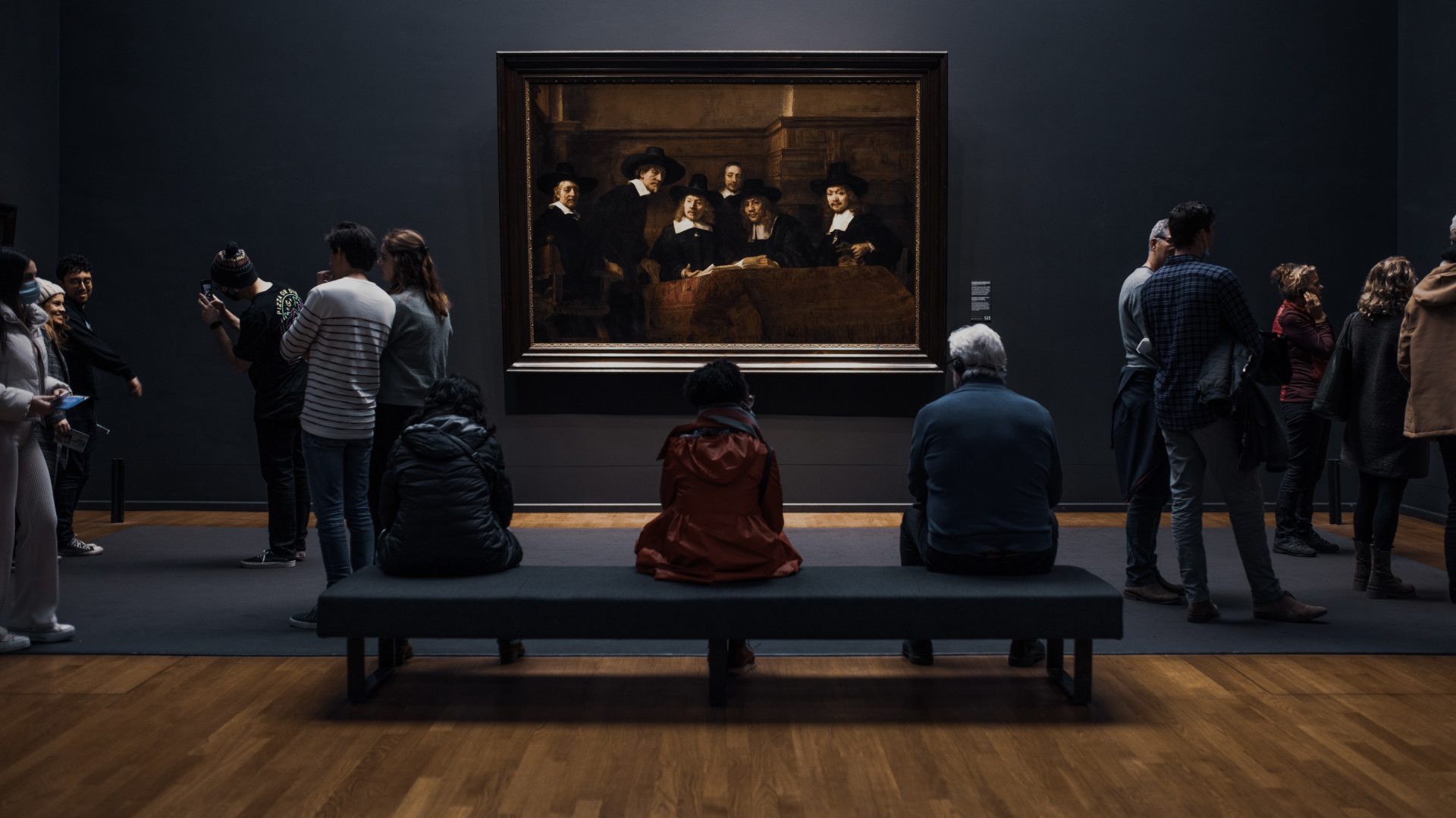NFT and traditional art, a combination that can exist
Updates
What are NFTs? What relation do they have with art? Why are they important for traditional art? Here we explain how AerariumChain links these two worlds, providing financial and cultural support to museums through NFTs.
According to a UNESCO article, in 2020 museums were closed for an average of 155 days with a decrease in access of around 70% while in 2021 almost 50% of museums underwent a period of complete closure, leading to reductions in net profits that resulted in decrease of salaries and redundancies. All this was happening while a new word was making its way through the art world, one that would transform the upcoming months and eventually change the world of digital art: NFTs.
What are NTFs
NFT stands for non-fungible token and it’s one of the most frequently used words in these past few months. To try and understand what NFTs are, we need to focus on the first part of their name, that is non fungible, i.e. a product that cannot be replicated or substituted. An example of a fungible product could be a 10 euros banknote that can be exchanged for another one of the same kind, without there being any differences in value. A work of art on the other hand is seen as a non-fungible product, because it cannot be exchanged with a generic object of the same value (its twin/identical). Hence, the big difference between digital tokens of the cryptocurrencies – such as BitCoin – and NFTs is that the latter ones, being unique, are not exchangeable like coins.
The essential characteristic of NFTs is their uniqueness. To simplify it all, we could say that they are digital certificates linked to a good, digital or otherwise.
In order to work the NFTs make use of blockchain which acts as a digital ledger, keeping track of all transactions via a code that cannot be altered and that allows one to see its history at any time.
With the development of Ethereum and the possibility to demonstrate being in possession of something intangible, we started thinking that this principle could also be applied to digital art. The sale in March 2021, by the auction house Christies of the NFT work of art Everydays: the first 5000 days by Beeple an America digital artist for almost 70mln dollar, generated a worldwide interest for NFTs connected to the world of art. This moment marked a turning point also in the world of tangible art: many started asking themselves how to develop this unlimited potential for traditional art and proposals from many parties began flying in. In this scenario AerariumChain has formulated a specific response aimed at supporting museums and foundations in financing their mission.
Beeple’s artwork – Everydays: the first 5000 days NFT opera

NFTs of digital art vs physical art
The digital is not new in the world of art, since the development of the first computers traditional artworks have also slowly started to appear on such devices and, at the same time, purely digital works started to appear too. But why all this hype with NFTs?
NFTs represent a paradigm shift from the past. This is because on the one hand they can represent to all intents and purposes a certificate of ownership of the digital file linked to it. On the other hand, because through Smart Contracts they can automate everything that concerns the execution of contracts, the movement of digital assets, contextual payments, including the verification of the rights of use and the recognition of royalties to whoever is responsible (the museum and the author for example). All this without needing any external parties to act as guarantors or enforcers, because it is the technology itself that guarantees the immutability and security of these transactions recorded on the blockchain. However, all of this needs to be put into the specific field of application in order to properly exploit the possibilities offered by this technology.
In the art world we can consider 2 macro areas of application of NFTs, that of digital art and that of physical art.
One of the major differences between a digital work and a physical one it’s obviously in the method of fruition. In the case of a digital artwork, we require an electronic device and access to content, while for a physical good normally the presence of the user itself is required to be able to make the most out of the experience, even if today we are used to enjoy a physical artwork in the digital world through its representation (a photo or a video for example).
Another of the aspects to consider is that of the proprieties of the good and the rights of exploitation, that in the case of digital works can often resolve into an online transaction, while in the case of a physical work it requires a physical approach (logistical and conservative) to the good in the event of transfer of ownership and rights.
A digital work is more easily transferable, as it does need any third parties or very long lead times. The issue of NFT rights is not secondary because most traditional art falls into the category of physical artworks of which ownership and rights cannot be transferred, and with the rapidly expanding NFT market, this issue is becoming more and more decisive.

AerariumChain and NFTs
The idea of Aerariumchain is to unify the eternal world of traditional art with the potentiality of NFTs. Already working with works of art AEC knows the issues relating to maintenance and restoration of the artwork that trouble museums, especially in economic terms. The funds aimed at museums are increasingly fewer and, with the closings forced by covid, the last few years have not been easy.
The AerariumChain NFTMicros are born for the specific aim of supporting over time museums in their mission to preserve and make the works accessible, raising funds both through direct sales of NFTs and through the contribution to the museums themselves for each transaction in the secondary market.
The classical example that we make is ‘instead of buying a souvenir in the shop museum, a product that is often not sustainable because it is made in countries where labour is not protected and has an impact on the environment, in the same museum I could buy an NFTMicro that has a low impact because it does not pollute (we use a green blockchain) and brings 100% of your contribution to the museum”.
The starting point for AEC is its process of monitoring certified of the works: once the first certified 3D scan of a work is entered its unique digital fingerprint is created, which is notarised in blockchain. This allows to associate all the other scans that will be taken in time to the same artwork.
It is essential both for the monitoring of the works as well as being extremely useful because it creates a direct and continuous link between the real and digital versions, giving intrinsic value to the NFTMicro information.
The NFTMicro of AEC have a very specific purpose, which is why they can only be produced for works that have a certified digital fingerprint. It is precisely the monitoring process that allows the museum’s supporters to measure that these funds are being employed correctly.

NFTMicro and Metaverse
In general, if you’re thinking about buying the rights of the work with a NFT you could be wrong in the 90% of cases. This becomes more true if the NFTs belong to works exposed in museums, conspiring that the majority of the works in display in museums are not sellable, like their rights because possessed by a State or Foundations.
With NFTMicro AerariumChain has worked towards the realisation of a kind of NFT whose fruition is thought in relation to its own virtual image, exactly thanks to the direct thread linking the physical good, to its digital representation.
The value is linked to the fact that NFTMicros (or NFTs with similar characteristics) can only be issued once per work.
But the question that you may be asking yourself now is: what happens if I buy an NFTMicro?
The answer is perhaps too simple, as AerariumChain’s unique virtual images are all based on 3D scanning of the artwork. Imagine that you could have your own gallery with your favourite artworks in it of which you own NFTMicros and that this experience could change depending on the number of NFTs you own for each artwork.
And what better way to enjoy your works in 3D than through the Metaverse that already has, as of today, 350 million users on over 45 platforms? AerariumChain is working on just that and we will give you more details in the next articles.
Art is an irreplaceable asset that must remain available to future generations, and this is the aim of AerariumChain: to allow museums to finance the care and restoration of their works of art.


Request an estimate
Rely on AerariumChain to improve your museum experience, and preserve your cultural heritage.
Contact us
